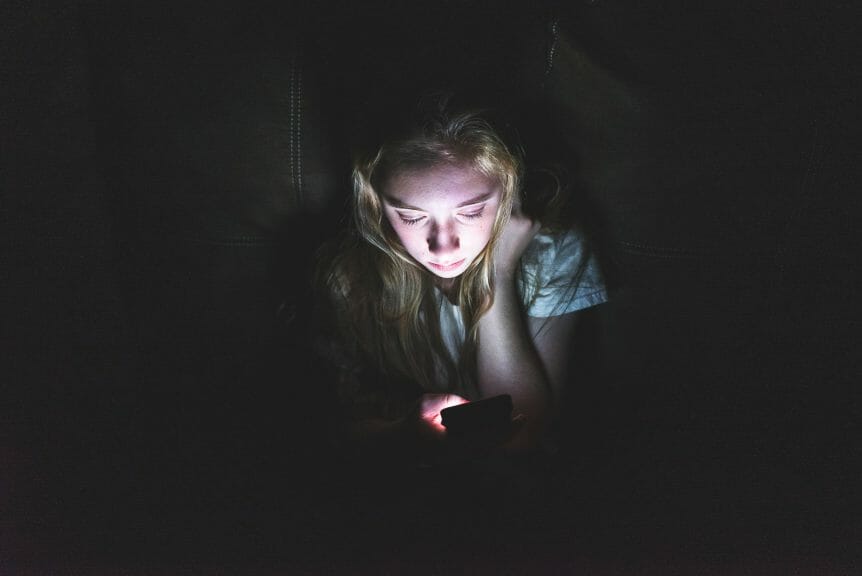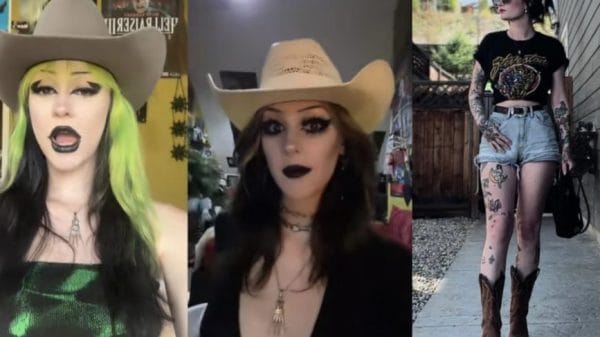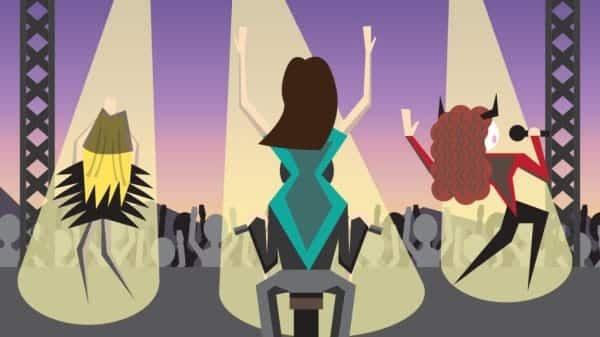We love TikTok. But do we love it too much? Has the algorithm become just too good?
According to businessdit.com, the average global TikTok user spends 95 minutes a day on the app. That’s 2.3 years of an average overall lifespan. These statistics are much higher than figures comparing other social media apps like Instagram with 51 minutes per day, or Twitter with 29 minutes per day.
So, what can we do?
Well, there is one growing movement tackling issues concerning technology, social media, and time management – it’s name is “Corecore”. Corecore is an artistic rebellion against the widespread culture of aesthetics on TikTok and beyond. Corecore creators collage together clips from popular culture and documentaries to inspire a particular feeling or highlight concern to the viewer. From gorpcore to ladcore to fairycore to whatever-is-next-core, our generation seems obsessed with aesthetic community categorization. A way of aligning yourself to a high-school clique (the jocks, the nerds, the drama kids) whilst maintaining a sense of unique individuality. As one TikTok user comments,
I came across Corecore whilst scrolling on TikTok. It stood out as its very different to most of the content I see. I think my TikTok is probably less reflective or just sort of meaningless so it definitely caught my attention. It reminded me that I was spending too long mindlessly scrolling.
Iona Lindsay
Why Now?
With the rise of Artificial Intelligence, the Meta-verse, climate change, and countless other growing concerns, it does not seem surprising that young people are worrying about their future.
But, young people have always worried about their future. Is it just a part of being young? Of figuring out your place in the world? Of growing up? Perhaps these Corecore creators are the new generation of teenage poets, writing emotional lyrics in their bedrooms filled with angst. The only difference is that now, as a generation born with technology, we look to social media to produce and convey our thoughts, equipped with a massive potential audience ready to listen to every word.
I also think Corecore is the inevitable development of aesthetic “core” culture because people want to be seen as more and more unique, or more “different” compared to others. A popular comment on these videos is that “the less likes the better the corecore video” which shows a desire for obscurity like the feeling of finding treasure independently. Iona Lindsay’s earlier comment that Corecore stood out as “different” to the rest of her feed proves this precisely.
Corecore and Art
Modern art often reflects anxieties about a changing world, particularly in relation to technology. Modernism is often considered to range from the late 19th to the mid-20th Century. Throughout this period, the industrial revolution accelerated, technological advances were everywhere, and the world came to grips with global warfare like never before. These changes were reflected in the artwork of the time, with contemporary cultural collages becoming popular and more abstract methods coming into fashion.
With Corecore, I would argue, we can see a Gen Z post-modernism. In terms of content, there is an underlying anxiety concerning technology and humanity to many of the videos. However, in terms of form, the lack of a clear narrative and the seeming randomness of the compilations also contributes to a post-modernist effect. We as the viewer are not told which clips are most important. We are not told what to think. Instead, we are left to our own thoughts in deciding our opinions on the state of the world around us.
Corecore’s Effects
In response to TIME Magazine’s article on Corecore, @masonoel posted a statement on Instagram that read:
The whole point of this stuff is to create something that can’t be categorized, commodified, made into clickbait, or moderated—something immune to the functions of control that dictate the content we consume and the ideas we are allowed to hold.
@masonnoel
Mason highlights an unwillingness to associate with traditional media because of the relationship between journalism and a potential “control” of the reader. Corecore wants to be a free and unrestricted movement without boundaries or definitions in place.
However, what intrigues me is the continued use of TikTok to post Corecore content. Why capitalize off of, and contribute to the platform to which the aesthetic is opposed? There is an interesting relationship between both alienating and embracing technology in this way. Perhaps TikTok, in its very randomness and because of the lack of control of the viewer in choosing what content to consume, ironically supports and uplifts Corecore in its algorithm.
Randomness is central to both Corecore and post-Modernism. Across the Corecore videos, there has been a call of arms for people to delete TikTok on the 3rd of March. This date has been selected at random to accentuate the pointlessness of many aspects of society that the Corecore videos so often preach.
It seems Corecore’s mission is working. Iona Lindsay reflects that:
The Corecore videos have definitely impacted me. I already delete Tiktok on and off but it definitely made me delete Tiktok for good […] It made me feel more reflective about life; what kind of career I want to have, what I’m doing on this planet, and I think kind of in a weird way made me more wary of technology […] I’m quite scared for the future.
Iona Lindsay
So, are you joining Iona and deleting TikTok?
Tik, tok, tik, tok, time is ticking…














